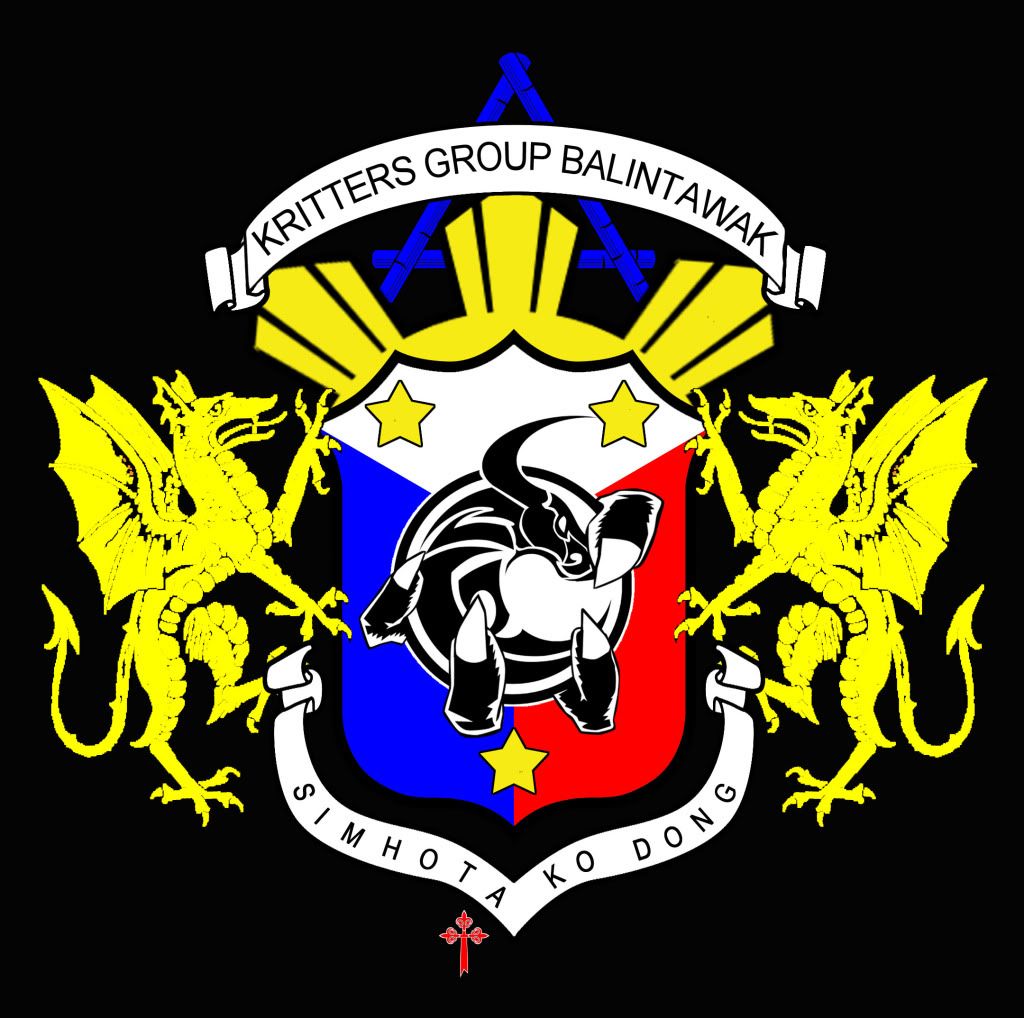Brief History of Coat-of-Arms
During medieval times, these symbols were worn on their long outer garment or surcoat and hence the name "coat of arms."
Knights use its coat of arms as a means of identification. Knights in armor looks more or less the same and the coat of arms was used to easily identify who is friend or foe in battle.
Coat of arms is also a family symbol, passed down from generation to generation. The eldest son inherits the family's symbol and the younger brothers made some changes in order to identify themselves but the shield does not change. For a married woman, her family symbol is added into her husband's coat of arms.
Today, coat of arms is still used as identification of a nation, government departments, companies, organizations, clubs, etc..
KGB-MAGGS Coat-of-Arms
Top Ribbon - Name of the Group
Triangle - 3 arnis sticks honoring the 3 Velez brothers (Chito, Monie, and Eddie).
Shield - Philippine colors, recognizing that eskrima/arnis is an indigenous art of the Philippines.
Buffalo symbol - The Teovel's Balintawak symbol, claws symbolizing the Marapao Aggression System.
Bottom ribbon - Balintawak founder Anciong Bacon's famous words while practicing.
Dragon - Valiant defender of treasure. The Kritters group embraces the indigenous art of the Philippines eskrima/arnis.

